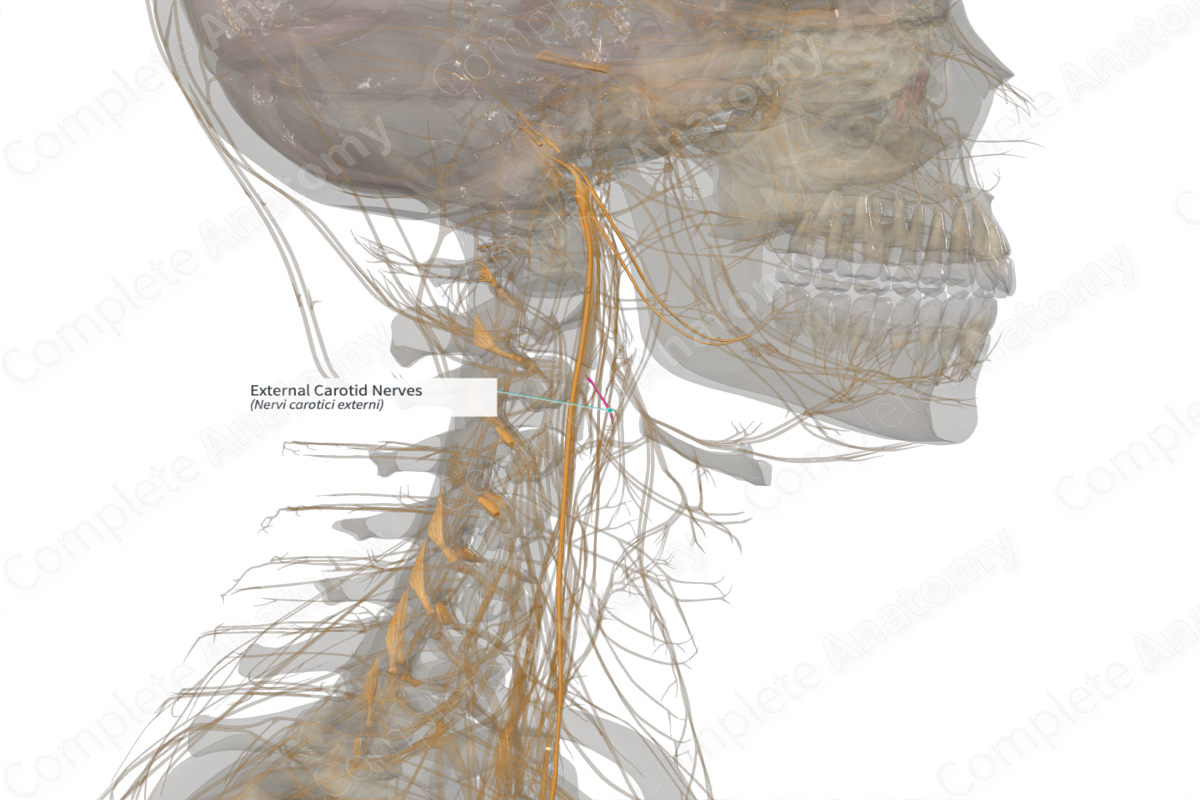
Quick Facts
Origin: Superior cervical ganglion.
Course: Travel along the external carotid artery and its branches to distribute along the face.
Branches: Forms the external carotid plexus.
Supply: Sympathetic innervation to the smooth muscle of the external carotid artery and its branches and facial sweat glands.
Related parts of the anatomy
Origin
The external carotid nerves are sympathetic nerves that originate from the superior cervical ganglion along its anterior surface.
Course
The external carotid nerves combine to form a plexus along the external carotid artery and its subsequent branches. These fibers will distribute to a number of ganglia and glands along the face.
Branches
The external carotid nerves will form plexuses around the branches of the external carotid artery. Branches following the facial artery will contribute to the submandibular ganglion; those around the middle meningeal artery contribute to the otic and facial ganglia. Most fibers will leave the external carotid arterial branches to join the trigeminal nerve to reach the skin (Standring, 2020).
Supplied Structures & Function
The external carotid nerves provide sympathetic innervation to the smooth muscle of the external carotid artery and its branches, as well as the facial sweat glands (Standring, 2020).
Visceral sensory fibers from the aforementioned tissues travel back to the central nervous system along the external carotid nerves.
List of Clinical Correlates
—Horner’s Syndrome
References
Standring, S. (2020) Gray's Anatomy: The Anatomical Basis of Clinical Practice. 42nd edn.: Elsevier Health Sciences.



